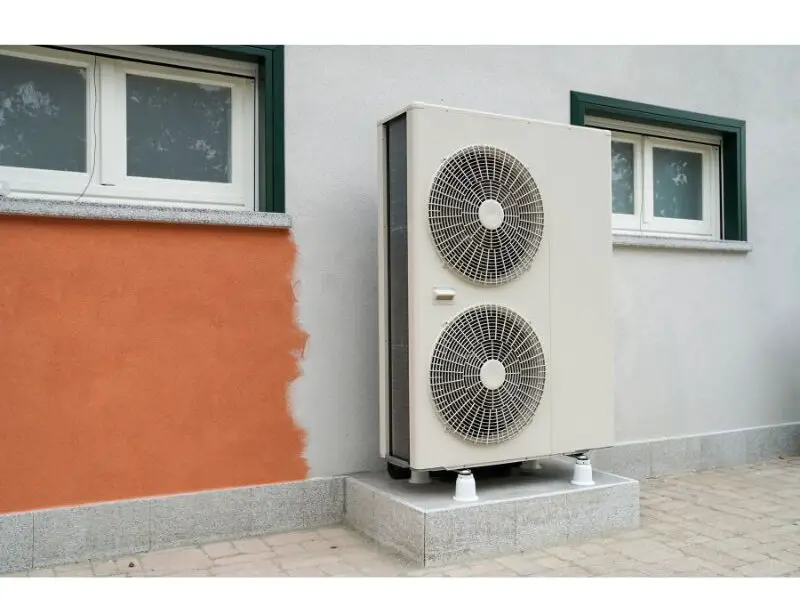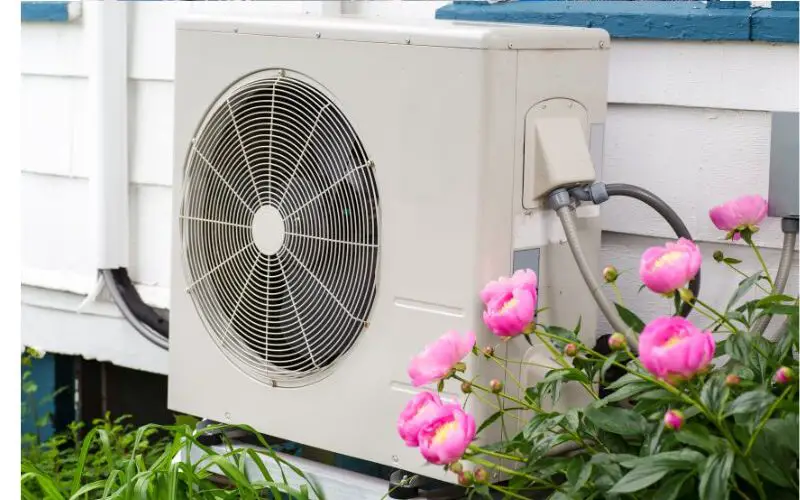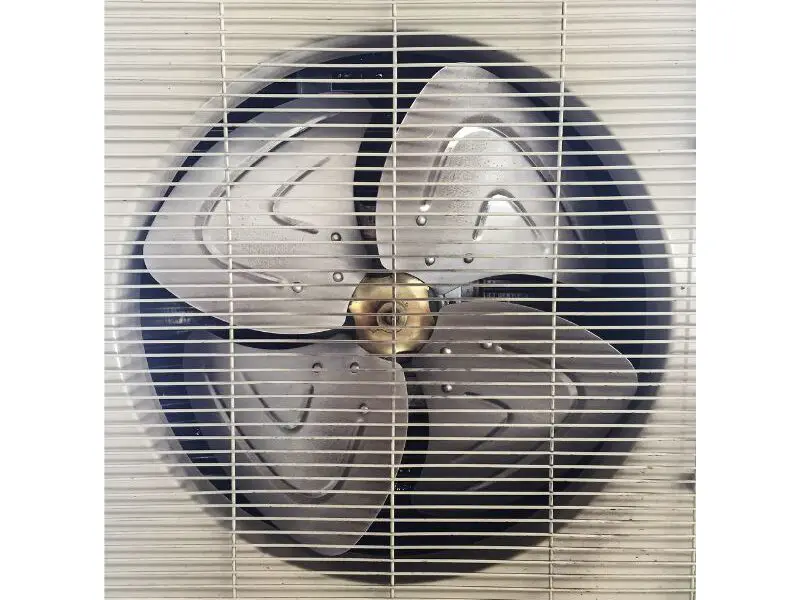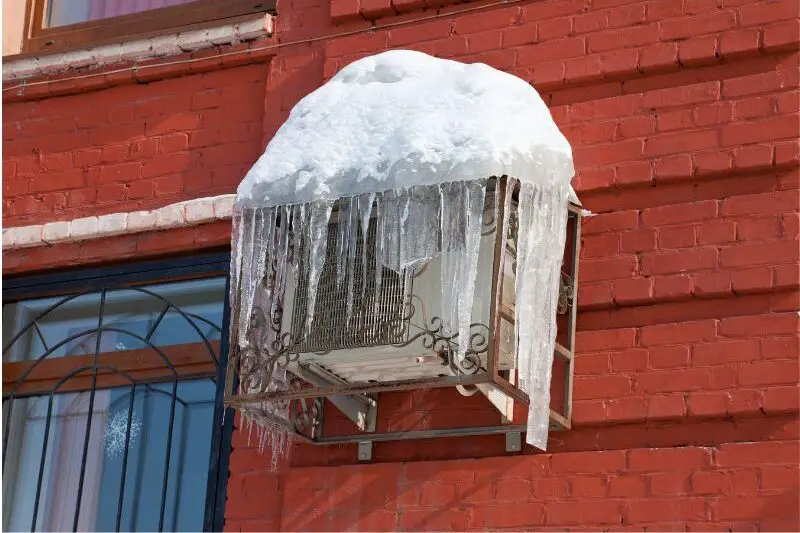Air Source heat pumps are great at reducing your carbon footprint and the government is trying hard to install them in as many homes as possible. But the location and position of the heat pump are important considerations. With many installation companies springing up hoping to install quickly as many as they can, you need to ensure it’s in the right place so it benefits you. Here we look at the main factors to consider.
Where to position your air source heat pump
The positioning of an air source heat pump is important because this determines the efficiency, so should not be in confined spaces. The recommended location is an outside wall or on solid ground with good air flow. It is important there are no obstructions around the air intake and the air exhaust.
In practice, this means at least 150mm of free space to also allow for maintenance and servicing.

Factors when choosing an ASHP location:
On the wall or the ground
You need to choose a place solid enough to bear the weight and vibration of the unit, where the noise during operation will not be amplified. Select the location of the unit in such a way that the sound generated by the appliance does not disturb anyone, and making sure it meets planning regulations because you don’t want it to be taken out and have to be placed elsewhere later.
Since water drain flows out of the unit, do not place anything under the unit. In full operation, an ASHP can drain out around 6 litres of water per hour. Make sure the the ground does slope so that water can flow into the unit base, which must be kept away from moisture.
You may need to add water drains to the foundation of the heat pump and prevent water traps that can damage the base.

Air source heat pump on a north facing wall
When considering installing an air source heat pump on a north-facing wall, there are a few things to keep in mind. It’s important to consider the potential impact of wind on the efficiency of the heat pump. A north-facing wall is likely to be more exposed to wind, which could affect the performance of the heat pump. However, modern air source heat pumps are designed to be efficient in a range of weather conditions, so this should not be a major concern.
Another consideration when installing an air source heat pump on a north-facing wall is the positioning of the unit. Ideally, the heat pump should be installed in a location that is sheltered from the wind, such as behind a fence or hedge. This will help to ensure that the heat pump is able to operate at maximum efficiency, even in windy conditions.
Be sure that the air inlet and outlet of the unit are not positioned towards the main wind direction. This is because a frontal wind will disturb the operation of the unit. If you find this is the only direction the unit can face, you can use a screen to block the wind.
If your local area is normally exposed to strong wind, speak with the installer. He should understand that strong wind blowing back into the unit through the air exhaust can damage the unit’s circuits. Continuous strong wind from the front can make the heat pump fan rotate too fast until it breaks.
If living very close to the sea and the ASHP directly faces it, the sea breeze contains a lot of salt particles that can potentially cause corrosion inside the unit. Corrosion may shorten the life of the unit. Manufacturers advise preventing direct exposure to winds coming from the sea by facing it away.

Noise pollution
Although the noise produced by the unit during operation is low, avoid installation near places where even low noise levels can be disturbing (e.g. near bedroom windows, terraces, next-door neighbours, etc). An ASHP works best when left on all the time to calculate the best times of operation, this means it can come on in the middle of the night.
Air source heat pump distance from neighbours
When considering installing an air source heat pump, it’s important to think about the distance between the unit and your neighbours. This is because air source heat pumps can generate some noise, particularly when they are operating at full capacity. In the UK, there are regulations in place to ensure that air source heat pumps are not installed too close to neighbouring properties. The exact distance that is required will depend on a range of factors, including the size and power of the heat pump, as well as the layout of your property and your neighbours’ properties.
In general, it’s a good idea to consult with your neighbours before installing an air source heat pump, particularly if you live in a densely populated area. This will help to ensure that they are aware of the potential noise and disruption that may be caused by the installation, and can give their input on the best location for the unit. By working together with your neighbours, you can ensure that the installation of your air source heat pump is a smooth and hassle-free process, and that everyone is happy with the final result.
Fire Hazards
There are many electrical components in an ASHP system so it is important the outdoor unit is not placed where there is a danger of fire due to leakage of inflammable gas. The area surrounding the ASHP must be free from the possibility of flammable gas leakage nearby.
Similarly, the equipment is not intended for use in a potentially explosive atmosphere, so, be aware of fumes nearby.
Electrical interference
The indoor unit should be installed at least 3 m away from television and radio sets. This is to prevent interference with images and sounds. Something to bear in mind, electromagnetic interference may still occur even if installed more than 3 m away, depending on conditions.

Exposure to snow
Heat pumps have defrost functions built-in for cold weather. They also have supplemental heaters to keep the appliance frost free and functioning well.
In heavy snowfall areas, it is very important to select an installation site where the snow will not affect the unit. You may need to install a canopy over the heat pump if there is a problem with heavy snow, especially if lateral snowfall happens regularly. It’s important the heat exchanger coil is not affected by the snow.
You will need to place the heat pump high off the ground to avoid accumulating snow. This may mean positioning it on the wall. You also have to ensure snow buildup in front of the heat pump doesn’t affect the airflow.
Do heat pumps need to be on an outside wall?
Air source heat pumps need to be installed on a strong solid structure outside, whether on the wall or the ground. This is because it extracts heat from the air outside and the fan needs a lot of air to work. Thermal energy from the air is extracted by air source heat pumps and converted into heating for your home.
How far can you put a heat pump from a house?
Almost all air source heat pumps are positioned one metre away from the house but can be installed much further away if required. There is no real maximum distance limit but as the distance increases, so does the heat loss through the pipework, which reduces efficiency. Locating the heat pump close to the house reduces the amount of pipework and saves on cost.
Read related articles:
